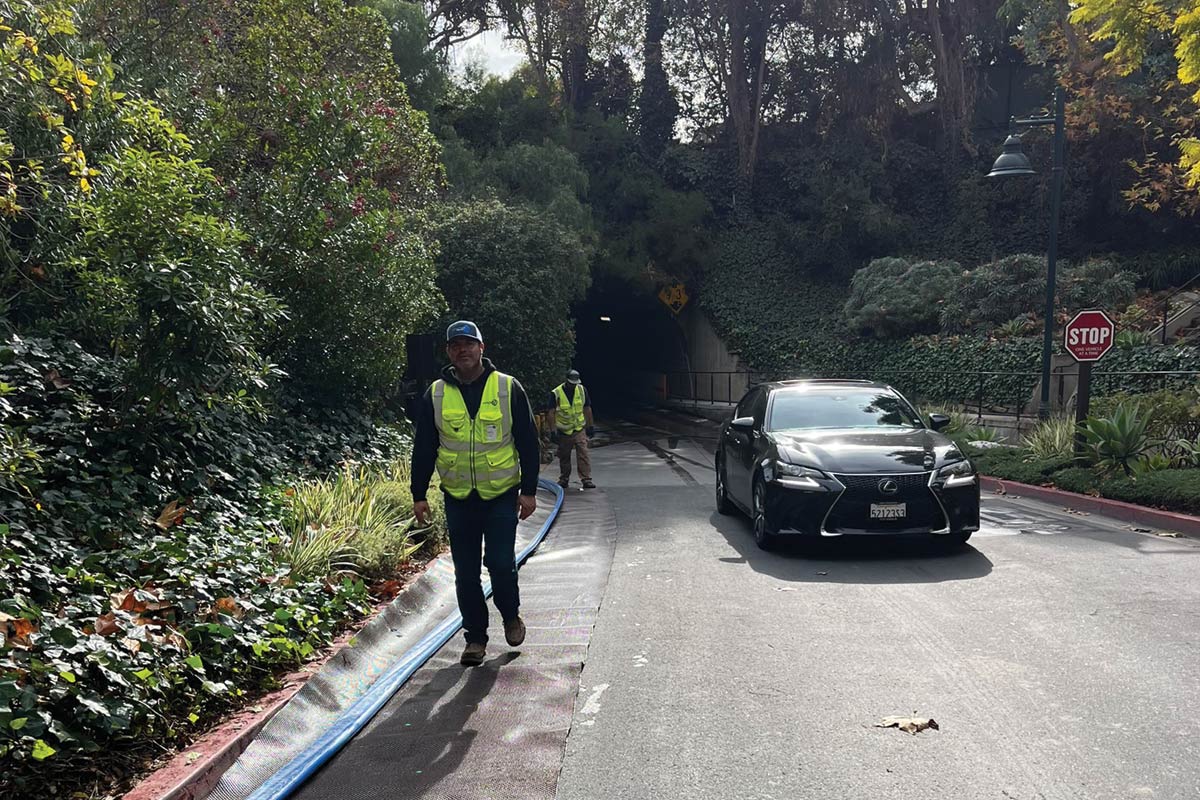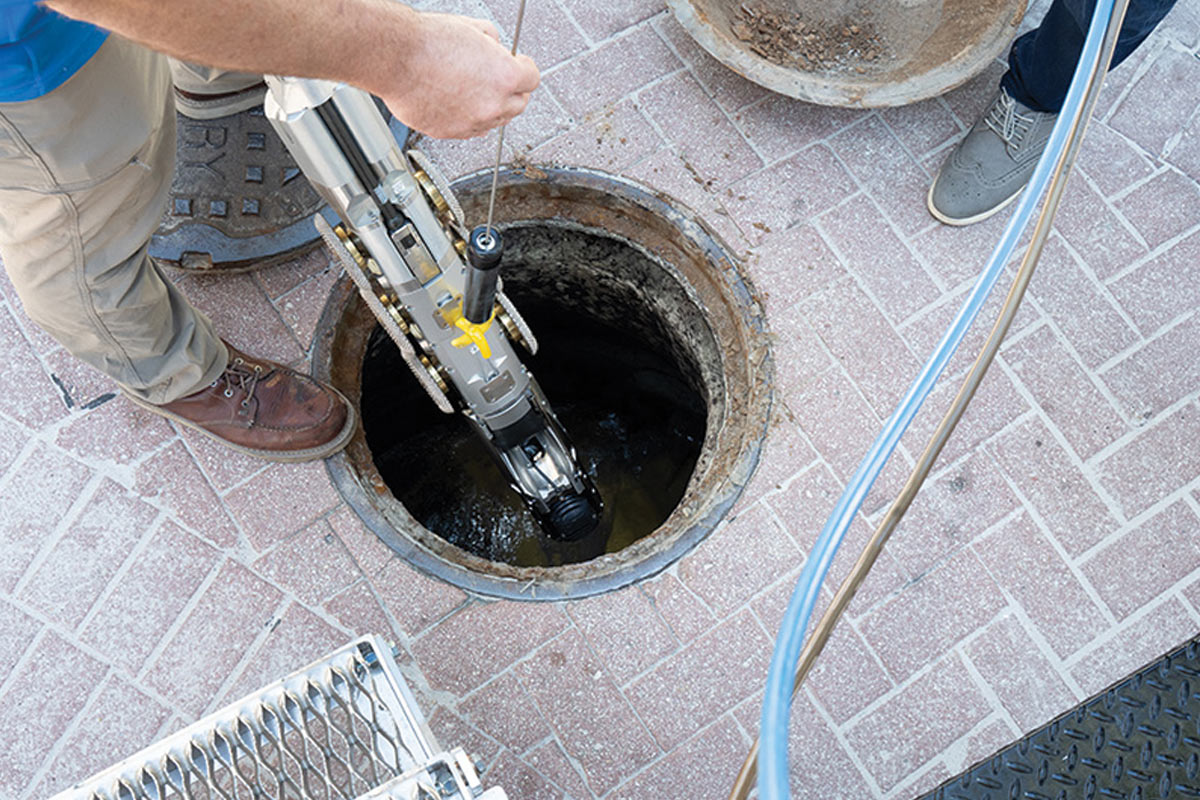
Identifying I&I Efficiently and Effectively with Smoke Testing
Could inflow and infiltration (I&I) be lurking beneath your city streets? Find out with smoke testing.
Where there’s smoke, sometimes there isn’t fire, but water – excess water. Clear water entering unnecessarily into city wastewater systems is known as inflow and infiltration (I&I). It can put additional pressure on treatment facilities and cause a host of costly issues. Sewer smoke testing is one of the most widespread and reliable ways to test for I&I.
For communities looking to proactively make repairs before problems become dire, understanding what smoke testing is, how it works, and how it contributes to I&I prevention is an essential first step.
Why Use Smoke Testing to Identify I&I?
The problem with I&I
When stormwater (inflow) and groundwater (infiltration) improperly route to wastewater systems instead of draining into the ground or routing to storm drains, challenges such as sewage overflows, backups in basements, and strained treatment operations may occur. Sources of I&I may include, but are not limited to, leaky or cracked pipes, deteriorating sewer maintenance hole covers, yard drains, and cross-connections to sewer lines.
Wastewater treatment facilities face additional costs to manage the influx of water due to I&I, which is then passed along to the customer communities and utility ratepayers. By reducing the amount of I&I running into the sewer system, wastewater treatment facilities run more efficiently and avoid expenses associated with repairs and/or upgrades. Identifying and addressing sources of I&I as soon as possible is the best way to keep rates down and efficiency up.
The smoke testing solution
While there are multiple testing methods, smoke testing is a proactive and budget-conscious way to pinpoint areas of I&I. This practice is particularly useful in commercial/industrial spaces with flat roofs and large parking lots with area drains and catch basins, but it is also practical and common in residential areas. Technicians “follow the smoke” and identify focused points of escape, indicating the need for further inspection – saving time, expense, and additional resources that would otherwise be spent surveying an entire sewer line.
One of the usual approaches to smoke testing is to use a mineral oil that is vaporized and injected into the sewer system with a large blower. While different in operation, one common comparison is to a fog machine seen at concerts. The mineral-based simulated smoke is non-toxic, making it safe for people, pets and the environment.
How Smoke Testing Works
Preparation
Months before smoke testing takes place, cities begin the planning process. Testing usually occurs during the summer when conditions are dryer, allowing the smoke to reach places otherwise sealed due to damp soil. Strategy and scheduling depend on several factors, including the type of location, pipe length, nearby construction projects, and city schedules. Geographic Information Systems (GIS) is a useful tool during this phase, providing data to indicate when and where testing should occur to make best use of city resources.
A significant public notification campaign is typically enacted to help prepare residents and business owners in the testing areas. A key consideration during this process should be the area demographics, as this will help identify optimal communication techniques, such as information sessions, mailings in multiple languages, visual communication fliers, and/or a community website. This is an opportunity to establish resident buy-in and partner with organizations to understand what additional resources may be needed to reach specific populations.
When the testing date grows near, crews often place informational flyers on residents’ doorknobs notifying them of the specific testing dates, offering contact information, and providing guidance on how to prevent and what to do if smoke enters their home/building. This will help avoid (though typically not eliminate) unnecessary calls to EMS if smoke is observed.
Testing day
- Isolation: Crews begin by isolating the sewer system sections designated for testing. This is done by creating an air dam, while maintaining sewage flow, using a variety of plugs that are inserted via utility access structures. The air dams allow pressure to build throughout the pipes, making the smoke more likely to find escape routes. Technicians work in two- to four-person teams to keep testing zones clear, maintain safety and interact with the public.
- Smoke generation: Using a local utility access structure or maintenance hole, technicians set up a smoke source, like a smoke machine, candles or smoke bombs, paired with a blower that propels the simulated smoke through the sewer system.
- Observation and reporting: Technicians observe the area being tested – identifying, documenting and marking smoke exit points or potential blockages. Aerial drones may be used to identify smoke sources, providing a more efficient and safe method of inspecting roof lines. Any identified issues are recorded using GIS or other digital data collection applications, providing consistent data collection between technicians and allowing for quick report generation to the city or other stakeholders.
Next steps
Cities review the data collected during testing. Based on their findings, noted locations of smoke release are scheduled for follow-up assessment and/or repair.
When all preparatory actions are followed, smoke rarely enters the inside of a building, unless there is an improper plumbing issue. In the event that it does, ventilating the area usually allows the smoke to dissipate quickly, but the resident may need to contact a licensed plumber, as sewer gas could unknowingly be entering the home/business from the same source as the smoke.
Smoke Testing: Part of a Proactive I&I Strategy
Ultimately, reducing excess water in sewer treatment facilities and eliminating sewer overflow is the goal of I&I identification, and smoke testing can play a key role in this process. It’s a versatile tool that can make a significant impact by focusing resources where they are needed most.
Does smoke testing sound like a viable option for your community? If so, partnering with an experienced technical team is highly beneficial in developing a larger I&I strategy. Don’t get caught with wastewater around your ankles or skyrocketing treatment costs – start tackling I&I today.
Spencer Cossalter is a service group leader who oversees SEH’s sanitary and storm sewer infrastructure inspection and evaluation services team. Paul Kubesh is SEH’s senior I&I technician and hydrogeologist, leading all variety of field inspection and evaluation projects




